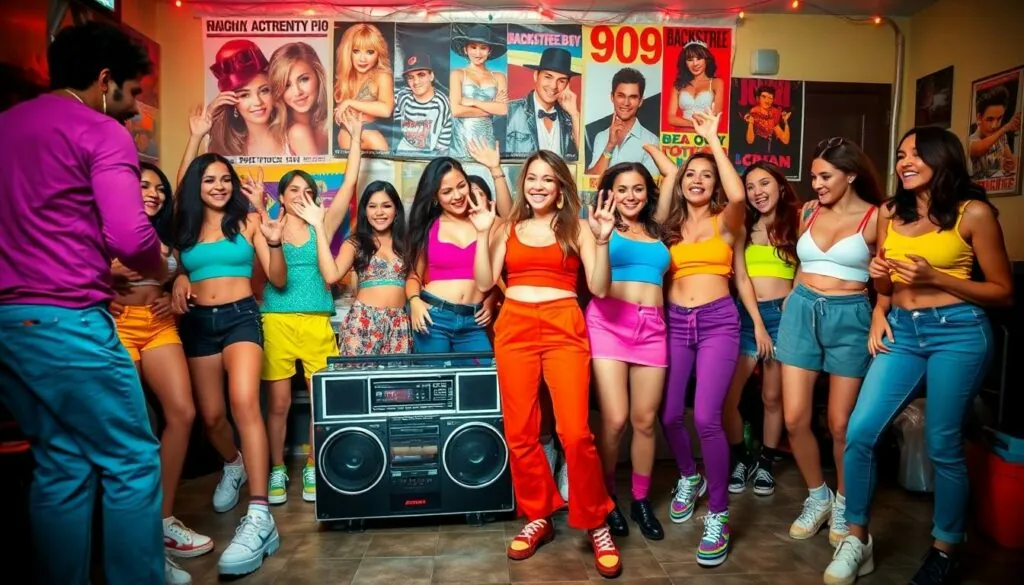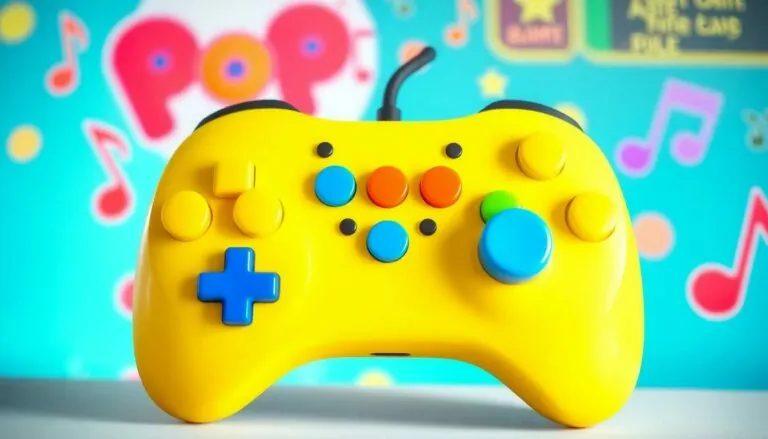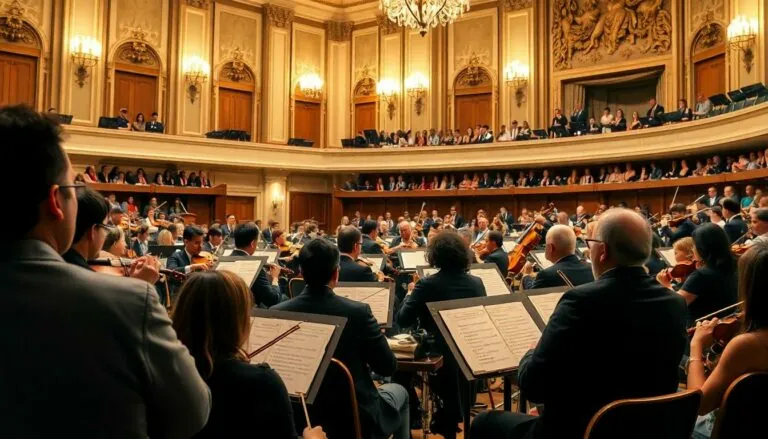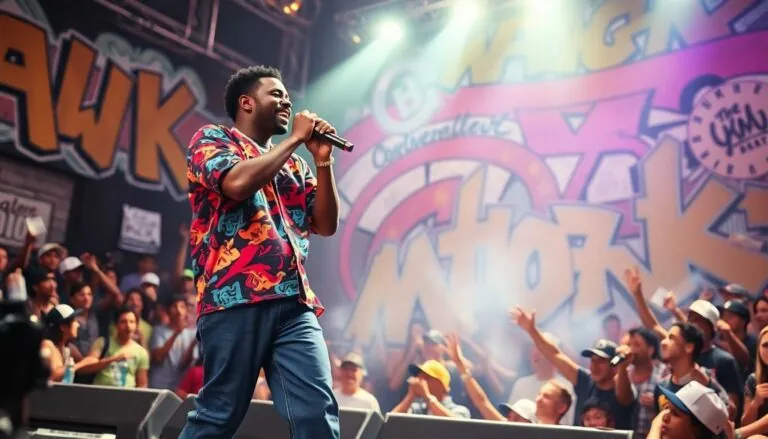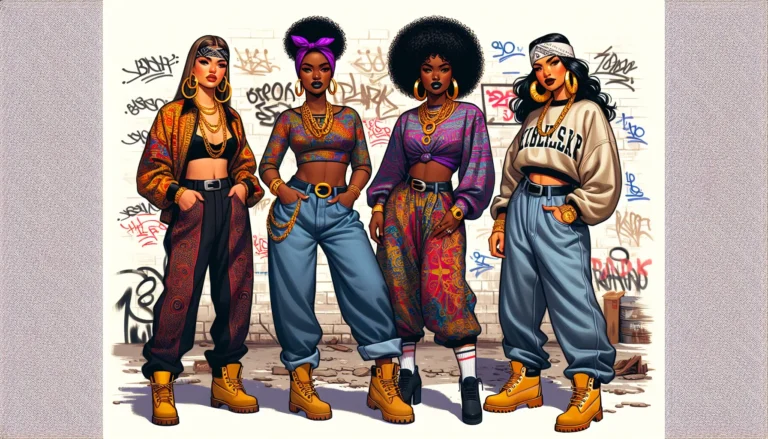Table of Contents
ToggleIf you think today’s pop music is catchy, just wait until you dive into the vibrant world of 90s pop. This era was a musical playground where bubblegum beats and unforgettable hooks ruled the airwaves. From the infectious rhythms of boy bands to the powerful ballads of divas, the 90s delivered a soundtrack that still gets played at parties and karaoke nights.
Remember the days when MTV actually played music videos? Those were the golden years when artists like Britney Spears and *NSYNC became household names, and music had a flair that made you want to dance like nobody’s watching. So dust off those flannel shirts and get ready to relive the nostalgia—90s pop music is back, and it’s here to remind everyone why it was the best decade for tunes.
Overview Of 90s Pop Music
90s pop music features a unique blend of upbeat melodies and memorable lyrics. Artists like Britney Spears and *NSYNC emerged as icons, shaping the genre’s landscape with essential hits. Boy bands and solo pop stars created an infectious sound that captivated audiences, referred to as the bubblegum pop phenomenon.
MTV played a crucial role in popularizing this sound through innovative music videos. Iconic performances captivated viewers, propelling artists to superstardom. Danceable rhythms became a staple of the era, encouraging sing-alongs and vibrant performances at events.
Genres such as dance-pop, hip-hop, and R&B significantly influenced 90s pop music. Collaborations between those genres produced chart-topping hits and paved the way for future artists. Notable examples include Mariah Carey’s influential ballads and the Spice Girls’ catchy anthems, both showcasing the era’s diversity.
The charts were dominated by unforgettable tracks, marking a cultural shift in music consumption. With hits by TLC, Backstreet Boys, and Ace of Base, the decade consistently generated top-sellers. Fans eagerly anticipated releases, solidifying a connection with their favorite artists.
Shifts in production techniques, including digital sampling and synthesizers, defined the sound. These innovations allowed for a richer listening experience and contributed to the genre’s lasting appeal. The fusion of styles and artists created an inclusive and vibrant scene.
Today, nostalgia for 90s pop music remains evident. The infectious hooks and upbeat vibes continue to resonate with fans. Celebrating this transformative decade reinforces its significance in pop culture history.
Influential Artists Of The 90s
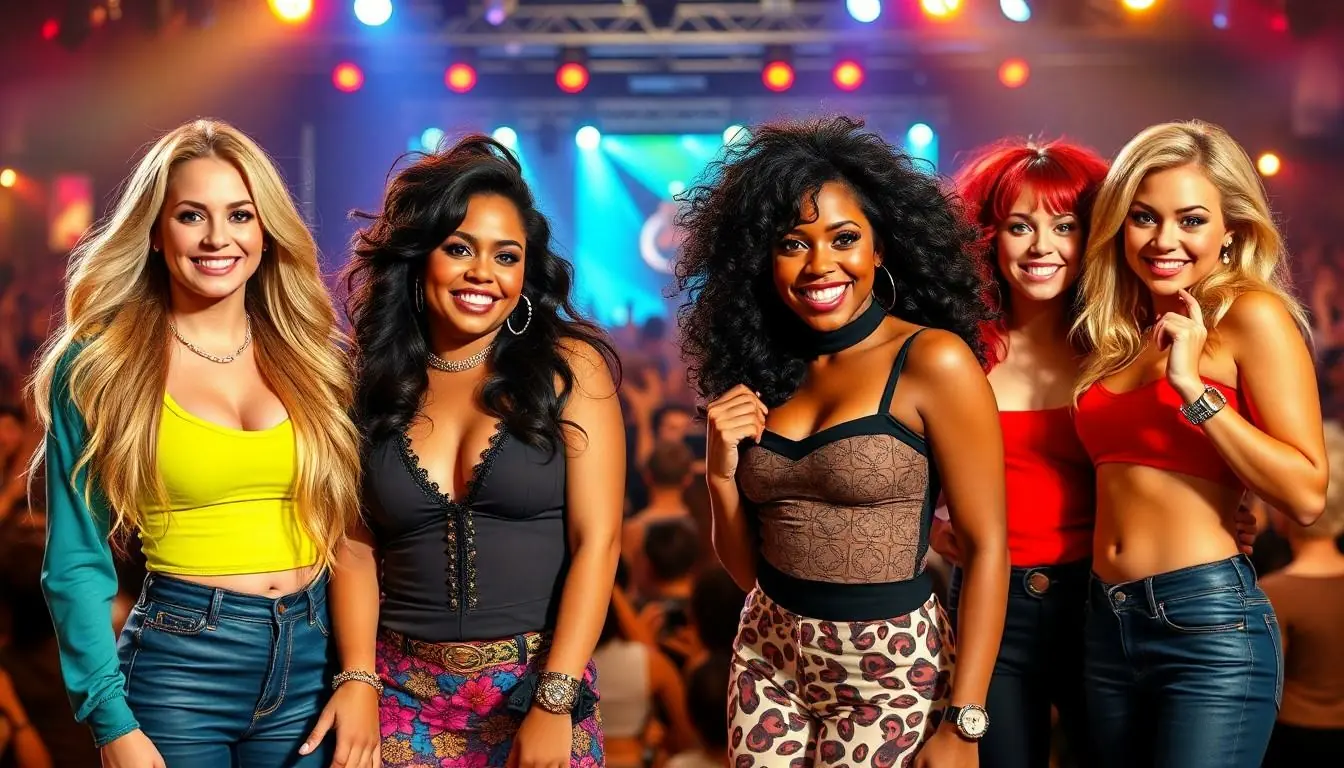
The 90s showcased a diverse array of influential pop artists, shaping the musical landscape and pop culture.
Female Pop Icons
Britney Spears emerged as a defining figure, capturing hearts with her debut single “…Baby One More Time.” Mariah Carey dominated the charts with five consecutive number-one singles, blending pop and R&B seamlessly. Whitney Houston’s powerful vocals shone through classic ballads, including “I Will Always Love You.” The Spice Girls introduced girl power to the mainstream, becoming a global phenomenon with hits like “Wannabe.” Additionally, TLC’s mix of hip-hop and R&B challenged norms, delivering messages of empowerment through songs like “No Scrubs.” These female icons left an indelible mark, solidifying their place in music history.
Male Pop Stars
The 90s also celebrated male pop stars who shaped the genre. Justin Timberlake rose to fame with *NSYNC, known for their catchy tracks and impressive choreography. Backstreet Boys captivated audiences with harmonies in classics like “I Want It That Way.” Usher blended R&B with pop, achieving iconic status through hits such as “Yeah!” Ricky Martin’s infectious “Livin’ la Vida Loca” brought Latin pop to the forefront, while George Michael’s solo career produced timeless hits like “Freedom! ’90.” Collectively, these artists contributed to the vibrant tapestry of 90s pop music, influencing future generations.
Genre Evolution In The 90s
The 90s saw significant evolution in pop music, driven by various cultural influences and trends.
The Rise Of Teen Pop
Teen pop surged in popularity during the decade, characterized by youthful themes and catchy melodies. Artists like Britney Spears and the Backstreet Boys became icons among youth, dominating charts with infectious hooks. Reality television and dedicated fanbases fueled their rise, making them household names. Numerous singles topped the Billboard charts, setting records for sales and airplay. The genre’s emphasis on danceable rhythms and relatable lyrics resonated with teenagers, creating a dedicated following. Overall, teen pop redefined the music industry, bridging the gap between youth culture and mainstream success.
The Impact Of Hip-Hop
Hip-hop played a crucial role in shaping 90s pop music, blending genres and expanding boundaries. Notable artists like MC Hammer and Will Smith introduced hip-hop to mainstream audiences, appealing to diverse groups. Collaborations between pop and hip-hop stars led to chart-topping singles that showcased this fusion. Songs often included rap verses over catchy choruses, enhancing the genre’s complexity. The influence of hip-hop extended to production techniques, incorporating samples and beats that enriched pop sounds. This evolution laid the groundwork for future collaborations, solidifying hip-hop’s place in pop music history.
Iconic Songs And Albums
The 90s pop music scene featured numerous unforgettable songs and albums that shaped the decade.
Chart-Topping Hits
Numerous chart-topping hits emerged during the 90s, capturing listeners’ hearts. Britney Spears’ “…Baby One More Time” became an anthem, showcasing her catchy pop sound and strong visual style. TLC’s “No Scrubs” resonated with fans, blending R&B and hip-hop, which empowered women. Backstreet Boys offered “I Want It That Way,” a boy band staple that showcased harmonies and romantic themes. Spice Girls burst onto the scene with “Wannabe,” making girl power a global phenomenon. These tracks remain firm favorites, continuing to influence artists across genres today.
Influential Albums
The decade produced influential albums that defined 90s pop music. Britney Spears’ debut album, “…Baby One More Time,” achieved multi-platinum status and set new standards for pop music production. Mariah Carey’s “Music Box” featured classic hits, displaying her vocal prowess and emotional range. “Spice,” the Spice Girls’ debut, solidified their place in pop history, with tracks that dominated charts worldwide. TLC’s “CrazySexyCool” combined diverse sounds, making it a hallmark of 90s R&B. These albums not only entertained but also shaped the future of pop music.
Cultural Impact Of 90s Pop Music
90s pop music significantly shaped culture, influencing fashion and trends, as well as the role of music videos in popularizing artists.
Fashion And Trends
Fashion in the 90s reflected the vibrant music scene. Iconic styles emerged, such as platform shoes, crop tops, and oversized jackets. Britney Spears popularized low-rise jeans paired with belly shirts, while the Spice Girls championed bold, colorful ensembles that embraced individuality. Accessories like chokers and slap bracelets became fashionable, showcasing the playful spirit of the decade. Boy bands, including *NSYNC, influenced male fashion with coordinated outfits, often featuring denim and bright colors. The era’s fashion choices resonated with youth, impacting trends for years and leaving a lasting legacy on how music and style intersect.
Music Videos And MTV
MTV transformed how audiences consumed music during the 90s. Innovative music videos became crucial for promoting singles, showcasing artists’ creativity and flair. The channel introduced iconic videos like Britney Spears’ “…Baby One More Time” and Michael Jackson’s “Black or White,” which captured viewers’ attention through memorable visuals. Artists often crafted elaborate narratives, turning their songs into cinematic experiences. Additionally, MTV’s Video Music Awards celebrated the genre, creating legendary performances that left a mark on pop culture. The platform also launched careers, solidifying its role in shaping the music industry’s landscape, and fostering a strong connection between artists and fans.
The legacy of 90s pop music is undeniably profound. Its infectious melodies and memorable lyrics continue to resonate with fans old and new. The era not only shaped the music industry but also influenced fashion and youth culture in ways that are still felt today.
As artists from that decade remain relevant in contemporary music, it’s clear that the magic of 90s pop isn’t fading anytime soon. Whether through nostalgic playlists or modern covers, the spirit of this vibrant decade lives on, inviting everyone to celebrate its enduring charm.

